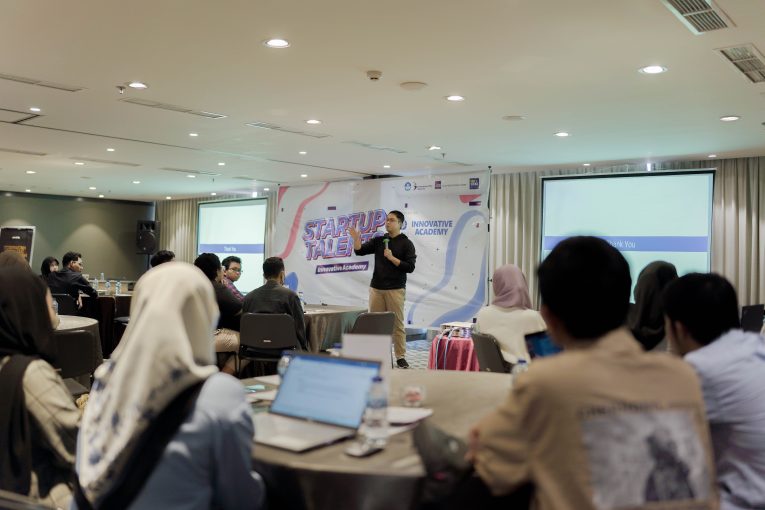
The subject of Product Market Fit was expounded upon by Mr. Alwy Herfian S, the Co-founder of Widya Indonesia Group. His presentation commenced with a sharing of insights and experiences related to the development of startup ventures within the Widya Indonesia Group. The group’s startup portfolio spans diverse fields, including IoT, Robotics, AI, and others, with a notable 75% involvement in the construction sector, where numerous implementations have been realized within the context of IKN (presumably an organization or institution). The mentor elaborated on the interconnected phases of achieving Product Market Fit and Problem Solution Fit, each phase serving to address and rectify shortcomings from previous stages.
Furthermore, the mentor provided insights on scaling a startup, emphasizing the necessity for validation from a broad spectrum of individuals, rather than relying on the opinions of a select few. The mentor articulated, “When creating something, craft a solution that addresses a specific problem, but do so in a unique manner.”
A paramount emphasis was placed on focusing on innovation in the quest to provide solutions to real-world problems. Innovation, the mentor underscored, originates from visionary thinking, involves dedicated teams for development, and holds the potential for profitable commercialization. To validate the products created, the mentor introduced the “pirates funnel” methodology, underpinned by the AAARRR metrics. The pirate funnel elucidates the process by which consumers are drawn to and utilize a product, ultimately serving as a parameter for Product Market Fit. The Pirate Funnel comprises the following stages: Awareness (to make people aware and see), Acquisition (to stimulate interest and encourage exploration), Activation (to instill a desire for product ownership), Retention (fostering customer willingness to reuse, potentially via repurchase or subscriptions), Referral (advocacy and recommendations to others), and Revenue (income generation).
Following the mentoring session, the subsequent phase involved a workshop in which participants crafted a Business Model Canvas, user flow, and other essential components required for designing a startup. Subsequently, after a presentation and workshop centered on Product Market Fit, where participants were tasked with comprehending market needs and target audiences, the next subject addressed was Brand Positioning.
The topic of Brand and Positioning was presented by Mr. Rakhmat Ganda Wirawan, serving as the Senior Brand Marketing Manager & Global Project Manager at ENESIS GROUP. This session aimed to elucidate the concepts of Branding and Product Positioning. The mentor elucidated that while brand and product are interrelated, they possess distinct characteristics. A product is a tangible or intangible offering created by a company to fulfill customer needs or desires, typically in the form of physical objects or services that can be purchased or consumed by consumers. In contrast, a Brand encompasses the entirety of the identity, image, and perceptions associated with a product or a company. This includes elements such as logos, names, company values, narratives, and reputation. Achieving success in business often necessitates a harmonious relationship between high-quality product development and effective brand positioning. A well-crafted product can enhance a brand’s positive reputation, while a strong brand can augment the appeal of a product. Consequently, it is essential for businesses to consider both the development of quality products and effective brand positioning strategies to attain long-term success.
The mentoring session proceeded with a discussion on several key aspects to consider within Brand and Positioning, including competitor analysis. An analysis of competitors serves to understand how rivals position themselves, identify the most suitable market segments for the product under development, focus on the core values that differentiate from competitors, ensure consistency across all aspects of the brand, including design and communication, and, additionally, necessitates monitoring and evaluating the effectiveness of brand positioning, with adjustments made as required.
